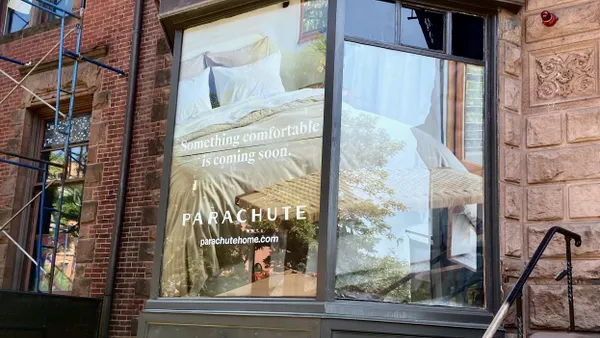Dive Brief:
-
The cost of e-commerce is weighing heavily on brick-and-mortar retailers, who have successfully increased digital sales but thinned their margins in the process, according to a new study from retail strategy firm HRC Advisory released Tuesday.
-
That shift has led operating earnings as a percentage of sales to decline by up to 25%, in part due to the major investments retailers are making in e-commerce and omnichannel plus the higher cost of e-commerce fulfillment, the study found. Returns of online orders are particularly expensive and returned merchandise is difficult to resell at full value, HRC added.
-
Although brick-and-mortar retailers have successfully increased their digital efforts, momentum is slowing. Online sales growth for 11 public department store chains fell from 39.3% in 2012 to 18.6% in 2015, HRC said, while the online sales growth rate for 22 specialty stores declined from 17.5% in 2012 to 9% last year.
Dive Insight:
The growth of e-commerce has been vexing brick-and-mortar retailers for decades now. They long ago figured out how to compete on price—the first wave that washed away their in-store margins. Now, as they increasingly work to compete online, operating expenses are eroding margins further.
“[S]elling on the Internet is not efficient,” Nick Egelanian, president of retail development consultants SiteWorks International, told Retail Dive earlier this year. “The whole methodology of selling on the Internet is completely foreign to what it’s like selling” at a store.
Think about it, Egelanian says: In stores, customers do much of their own fulfillment, taking down items from shelves, bringing them to the checkout and getting them home—tasks all accomplished by shoppers themselves without added cost to the retailer. For returns, most of that is also accomplished by customers.
But online orders—whether delivered by traditional shippers, same-day delivery services, or through omnichannel services like curbside pickup—all require more work by retail workers, more packaging and more shipping fees. And those fees aren’t likely to be picked up by consumers themselves, at least not in full.
Add to that the rising costs of retail wages and real estate, plus the loss of in-store sales to online sales, and retailers are in a tight spot, HRC says. That will require them to be more efficient in their e-commerce and online operations, according to HRC CEO Antony Karabus.
The good news is that the pressure from e-commerce costs isn’t enough to mandate store closures—yet.
“Retailers haven’t yet figured out how to grow and maintain brick and mortar profitability while trying to keep up with the likes of Amazon in today’s increasingly digital environment,” Karabus said in a statement. “Retailers need to recalibrate and fine-tune their economic business models to reflect today’s new variable cost-oriented online model. Those who can engage customers and meet their heightened expectations, while offering complete visibility of inventory availability, can be lucrative in reducing markdowns and improving inventory productivity.”














